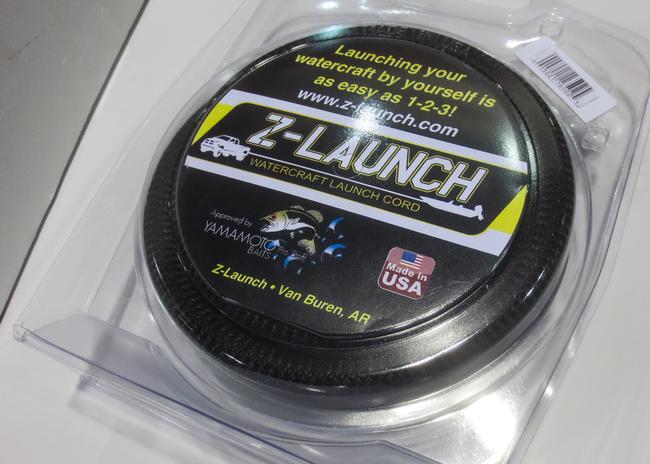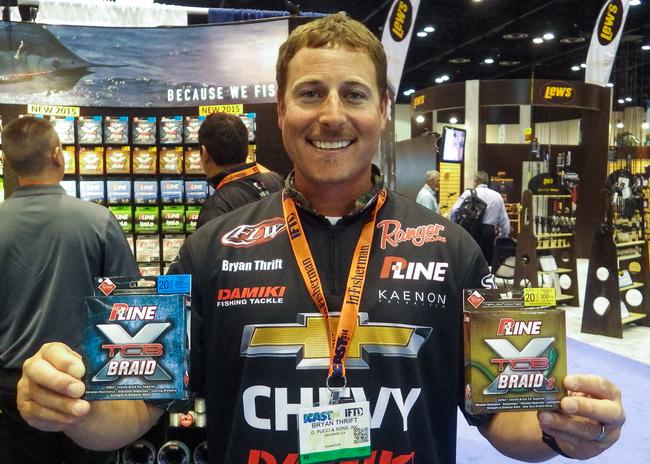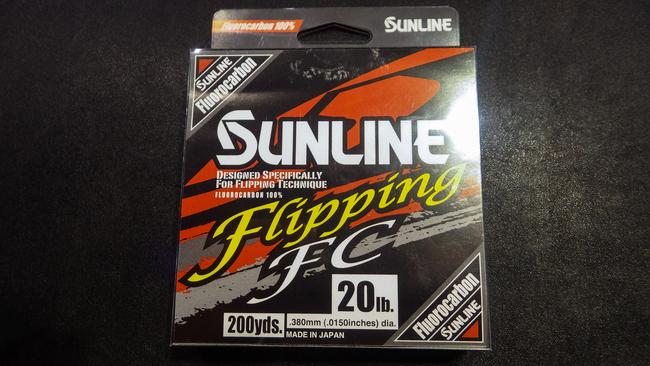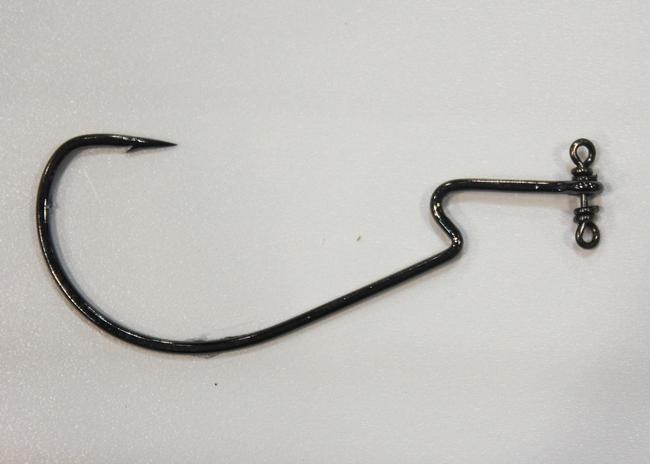ICAST Impressions Part I
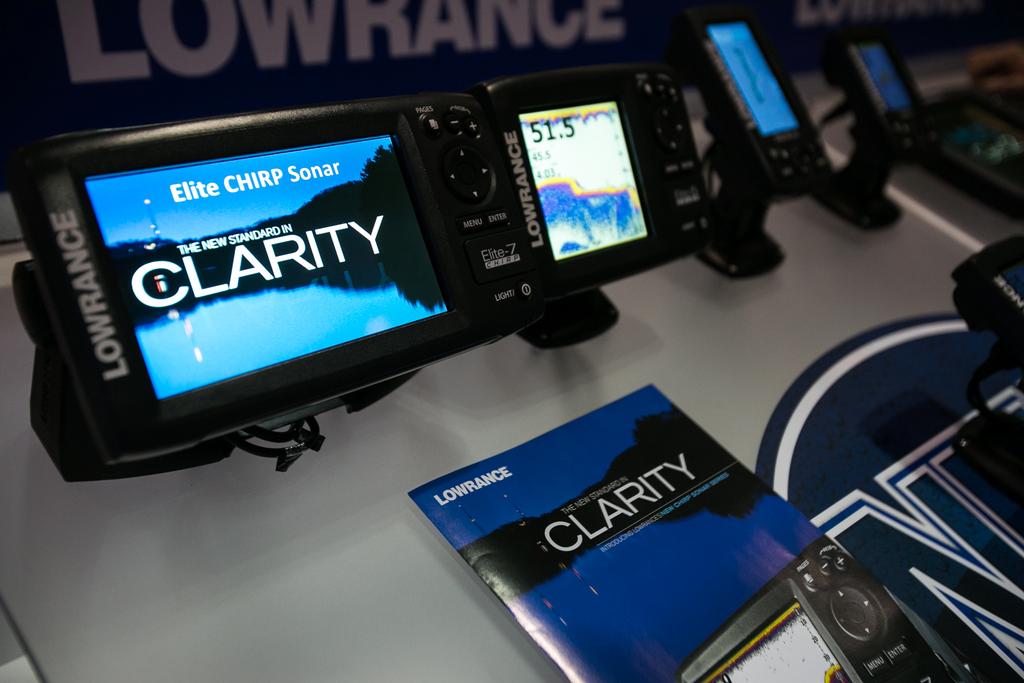
ICAST 2014 is in the rearview mirror. Like usual, it was a whirlwind of handshakes, shutter snaps and Q&A with the tackle industry’s best product designers and marketers.
If you missed any of the action, don’t worry. You can still check out all of FLW’s coverage from the show at flwfishing.com/ICAST. We sent a team of 14 writers, photographers and videographers to Orlando to report on all the great new gear and gadgets that made it to the Orange County Convention Center.
This summer and fall, we’ll be expanding on our coverage with in-depth product reviews done by some of the best fishing minds in the business.
For now, here’s a look at some of the most interesting trends, and the impressions left on our staff of reporters. This is part one of a two-part series.
Sun-Safe Clothing in Abundance
By Colin Moore
The days when cut-off jeans and old T-shirts sufficed for fishing are long gone. If the new apparel on display at the ICAST show was any indication, the latest fishing clothing is fashionable, utilitarian and, perhaps inevitably, expensive. It’s made of materials with names only a chemist could pronounce, and coated with concoctions guaranteed to deflect bugs, sunrays, odor and heat.
For the record, there were 13 neck or arm gaiters, 15 hats, 10 shorts, 37 shirts, 11 shoes, and three pairs of gloves introduced at this year’s show, making clothing the most numerous of products on display in the New Product Showcase, other than lures. As if to lend global warming some credence, most of the articles of clothing are designed to ward off the damaging effects of solar rays. Indeed, technical clothing is the new sunscreen, without all the greasy hands and burning eyes.
Along with all the dozens of sun-protective clothing introduced in 2014 at this same show, the new stuff is concerned with sun protection factors – SPF, as it’s known in the trade – or 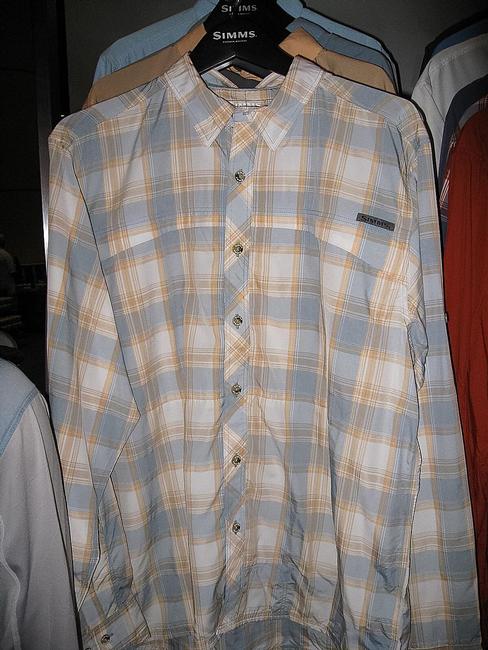 ultraviolet protection factor – UPF, as it’s also known in the trade. If your gear doesn’t carry a rating of at least 30 SPF or UPF, it’s not going to make the cut. Most of the items that rated a second look from the solar-challenged were way above that. Shorts keep getting longer, almost down to the knees, and are loaded with pockets and available in wild colors and patterns.
ultraviolet protection factor – UPF, as it’s also known in the trade. If your gear doesn’t carry a rating of at least 30 SPF or UPF, it’s not going to make the cut. Most of the items that rated a second look from the solar-challenged were way above that. Shorts keep getting longer, almost down to the knees, and are loaded with pockets and available in wild colors and patterns.
As for shirts, some of the standouts included the Hook & Tackle Bug/X, which has all sorts of 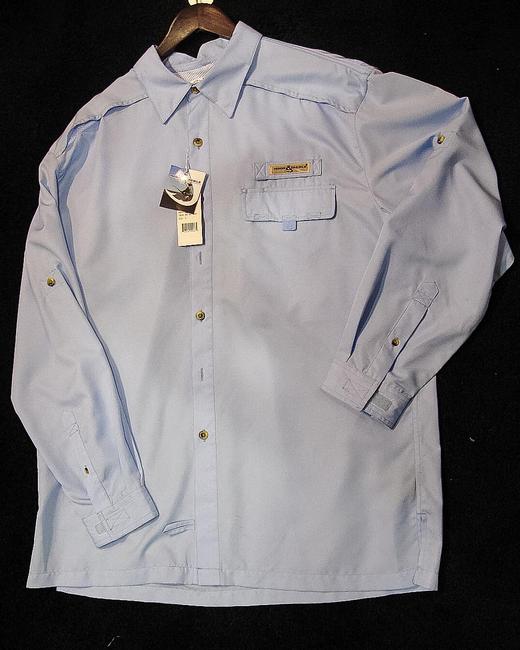 pockets to misplace things in, as well as insect and sun protection. Another keeper is the Snikwah convertible “neck shirt,” which features a generously cut turtleneck that can be pulled over the head for more protection. It also has thumbholes, so the sleeves stay in place no matter how hard you sling a crankbait. As for looks, it’s hard to beat the Simms Stone Cold button-up shirt. Its SPF 30 is nothing to brag about, but it’s a great-looking shirt for a fisherman, and nothing more than the usual parts of his physique are covered.
pockets to misplace things in, as well as insect and sun protection. Another keeper is the Snikwah convertible “neck shirt,” which features a generously cut turtleneck that can be pulled over the head for more protection. It also has thumbholes, so the sleeves stay in place no matter how hard you sling a crankbait. As for looks, it’s hard to beat the Simms Stone Cold button-up shirt. Its SPF 30 is nothing to brag about, but it’s a great-looking shirt for a fisherman, and nothing more than the usual parts of his physique are covered.
So, with 78 new articles of sun-protective, technical fishing clothing hot out of the factories, 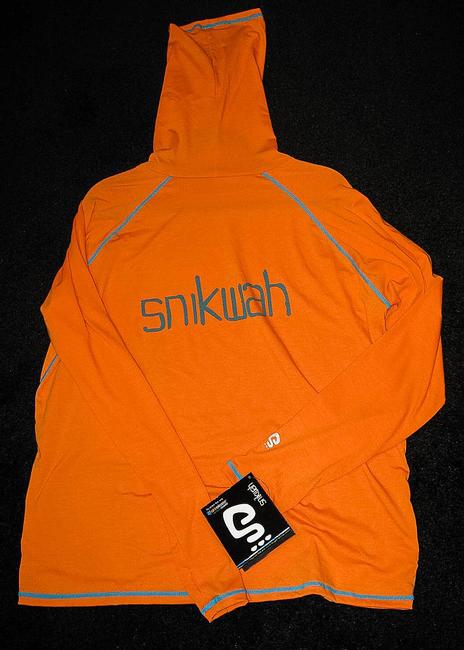 are we done? Probably not, or at least not so long as there’s a molecule to mix with another molecule and create the next best thing. It’s likely that one of the next trends will be to wrap head coverings with a sponsor’s name or logos: Mark Rose wearing a Strike King balaclava or Jay Yelas sporting a Gary Yamamoto neck gaiter.
are we done? Probably not, or at least not so long as there’s a molecule to mix with another molecule and create the next best thing. It’s likely that one of the next trends will be to wrap head coverings with a sponsor’s name or logos: Mark Rose wearing a Strike King balaclava or Jay Yelas sporting a Gary Yamamoto neck gaiter.
There’s no such thing as too much advertising.
Tools to Make You More Efficient
by Ross Robertson
Most fishermen like to accessorize, but we certainly wouldn’t be caught dead calling it that. We want things to match, help us stay organized and just make our lives easier in the boat.
Thankfully, there are dozens of companies at ICAST showing off cool accessory products to satisfy all our needs.
If there was a generalized trend among new accessory products at this year’s show, it was that all of the items are designed to make us more efficient. Here are some of my favorites:
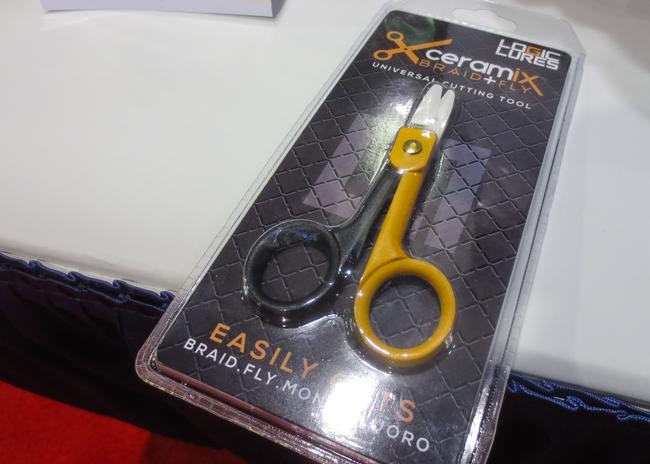
The new Logic Lures Ceramix Scissors cut braid, mono and fluorocarbon flawlessly, but because the blades are made of ceramic material and not metal, they’ll never rust. So you can leave them on the front deck where they’re easy to reach, rather than stowing them away in a compartment.
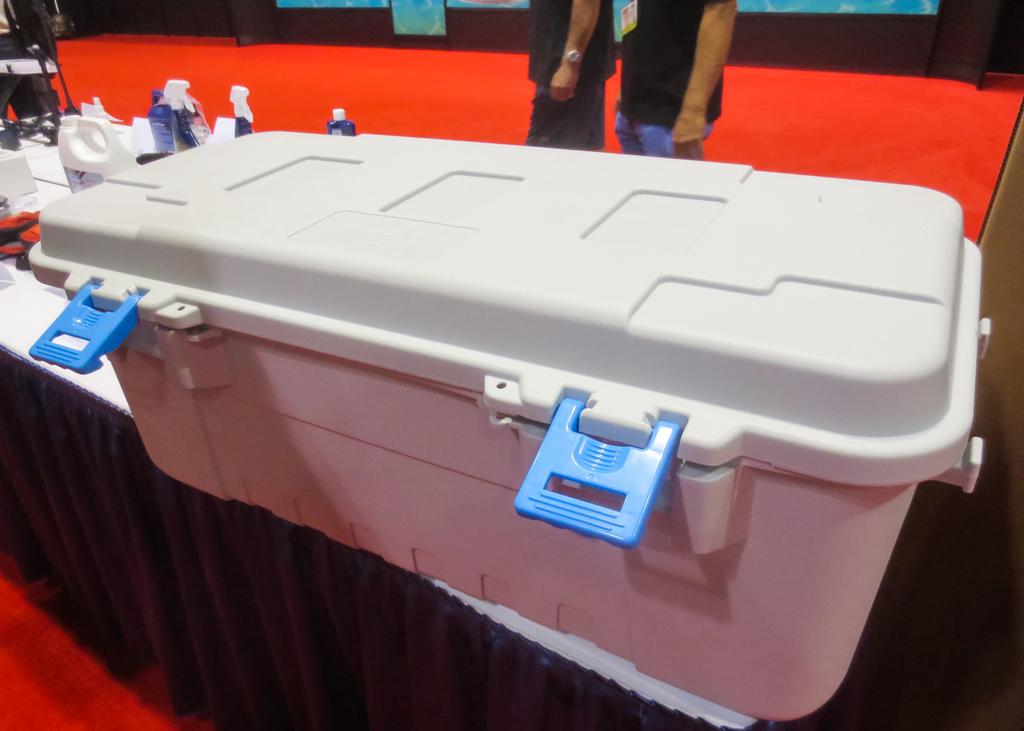
Plano’s new Marine Trunk and countless utility boxes make it easy to organize your boat, truck and even garage so that finding anything is just a matter of grabbing the right box or storage tray.
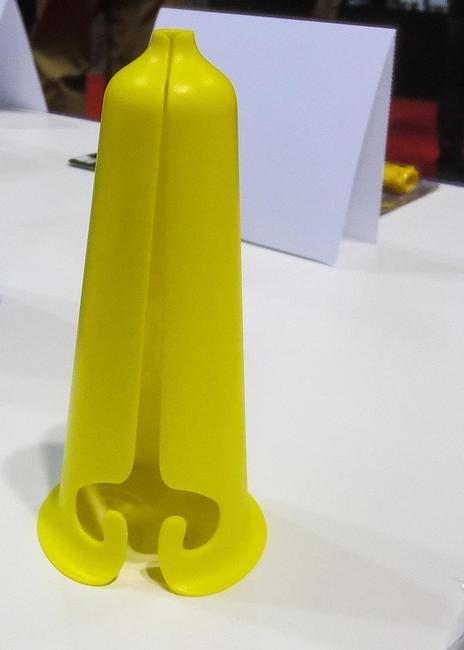
Simple products like the HookSafe prevent rods, line and hooks from getting tangled when moving equipment from the garage to the house, or when unloading rods from the rod locker at morning takeoff.
Oddly enough, I think the best accessory this year is simply a piece of rope … that’s right. As a full-time guide, I launch my Ranger solo just about every day, and can honestly say that I have just about set my boat free in the marina a couple of times. The Z-Launch solves that problem. It’s a 10-foot stretchy rope that connects from the bow eye to the trailer and expands to 20 feet as the force of the boat drifting off the trailer pulls it tight. With such a simple tool, anyone can launch a boat solo, even on a shallow ramp.
Accessories like these don’t necessarily allow us to catch more fish, but they sure can make life on the water more enjoyable. And that’s really the whole point, isn’t it?
Slow News Days from Folks Making Fishing Line
By Jeff Samsel
My first surprise while reporting on new line at this year’s ICAST show came on Tuesday night at the New Product Showcase preview reception. When I walked over to the line section, I couldn’t believe the small number of companies that had some sort of new line entered, and of maybe a dozen or so products, only a handful of new lines had bass applications.
Not all new stuff gets entered in the New Product Showcase, so I thought there might be a bunch of sleepers on the main show floor. If they were out there, though, they were quite well hidden because in two days of walking the ICAST floor with eyes open for line innovations, I didn’t come across many.
Having talked with folks from various line companies, it makes sense. Whether you’re talking about rods, lures, accessories or something else, most product categories lend themselves easily to totally different shapes and styles. With line, you have a handful of basic types, and once a company has filled the niches for what it believes to be its markets, lacking some huge technological advance, introducing new stuff almost forces change from what’s proven. And if customers like a product, changing to something that’s supposed to be better is risky at best.
That’s not to say that there’s no room for innovation, or that nothing was worthwhile at this year’s show. In fact, those new lines that were revealed will provide substantially better tools for fishermen.
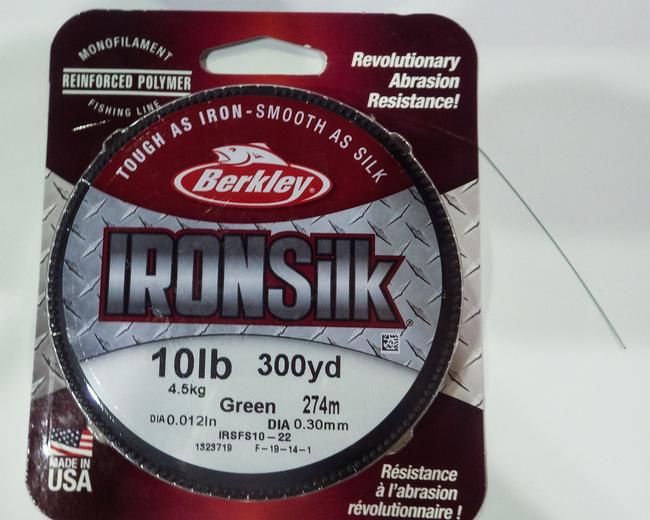
Berkley IronSilk, which won the Best Line category of the New Product Showcase, is astoundingly abrasion-resistant, but soft and manageable at the same time, and therefore it’s ideal for fishing around gnarly stuff. If the name sounds familiar, that’s because IronSilk is a re-launch. It’s not the same product, though. It’s a far improved line from the original IronSilk.
One trend I did notice in the limited number of introductions this year was toward improvement of braided lines so that they retain their round shape and manageability in use. Some improvements have been achieved through braiding more carriers but using lighter strands; others, such as the TUF-Line Tournament 8 Spectra, P-Line TCB Braid and Woodstock Power Cast, by coating the line in some way.
Additions in the line category also included some new line colors, which can make a big difference and that often are designed for specific applications. There were some new metered lines (lines with alternating colors) too, including the Sunline Flipping FC, which is a clear line with sections of chartreuse that help an angler see bites, as well as feel them, in close-quarters applications.
So while there weren’t a lot of new offerings from line makers this season, you can rest easy, because that’s not necessarily a bad thing. Maybe the line you’ve been using all along is really as good as it gets.
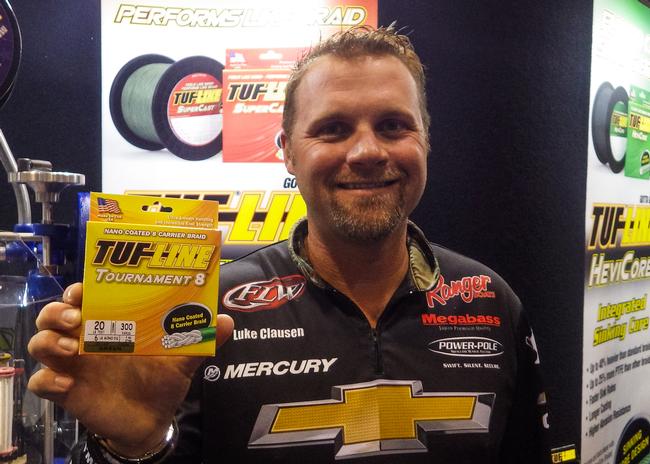
“Smarter” Equipment for Boat Control
By Ross Robertson
Fear it or embrace it, the modern age of technology is overtaking the fishing industry. These days, you either get on board with it, or you get beat at the scale. That being the case, every year at ICAST we see hoards of new products that capitalize on the most cutting-edge technology, and we see new electronics that could potentially redefine fishing for the next several years.
This season, we witnessed another step in the progression of modern “smart” boat-control equipment, especially in the electric-steer trolling motor category. Both Minn Kota and Motor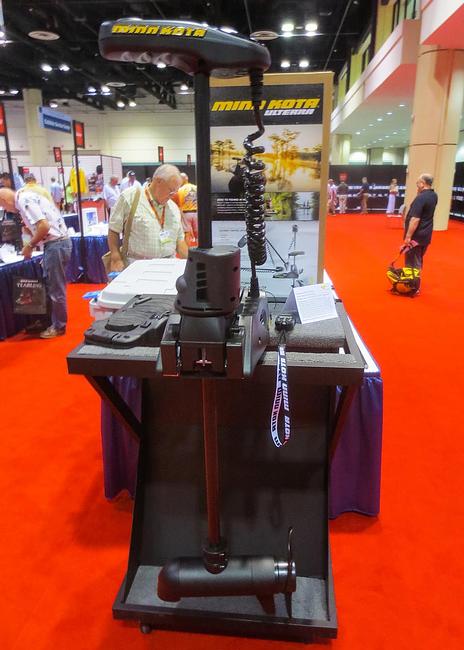 Guide – the two leaders in the trolling motor market – have an electric-steer trolling motor that features autopilot and “spot lock” technology, the latter being a feature that “anchors” the boat in place via a GPS-synched trolling motor. Interface them with your GPS and you don’t have to do anything to control the boat besides punch buttons on your depth finder.
Guide – the two leaders in the trolling motor market – have an electric-steer trolling motor that features autopilot and “spot lock” technology, the latter being a feature that “anchors” the boat in place via a GPS-synched trolling motor. Interface them with your GPS and you don’t have to do anything to control the boat besides punch buttons on your depth finder.
This technology has blown up in walleye and salmon arenas, but it’s gaining steam in the bass world, where offshore techniques consistently dominate in the summer months.
Great Lakes bass anglers have been using GPS-enabled electric-steer motors for several years because of their ability to operate the boat hands-free and use the GPS feature to hold them on a precise spot in heavy winds – surely Tennessee River anglers will catch on to the benefits before long.
Originally the Minn Kota Terrova was the motor of choice for this. This season, Minn Kota released the Ulterra, an electric-steer trolling motor that includes all of the features of the Terrova in a slightly beefier package and with an auto deploy and stow feature. For MotorGuide fans, there’s the Xi5 with Pinpoint technology, which links to a Lowrance HDS unit.
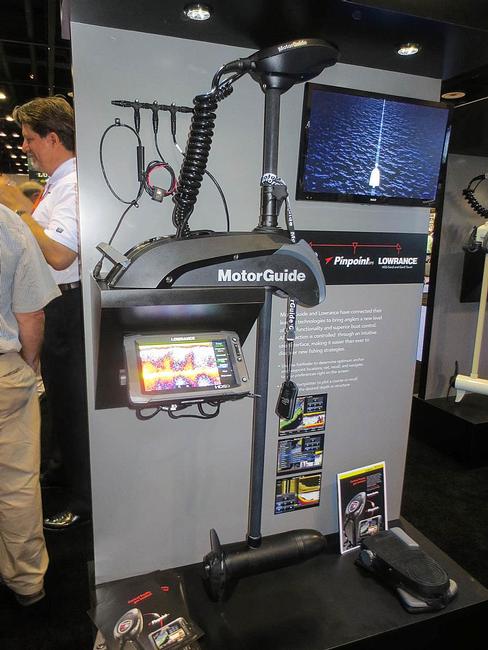 The boat-control revolution isn’t limited to just the front of the boat. Companies like Minn Kota and Power-Pole have continued to innovate in the shallow-water anchor sector. Last season it was Power-Pole’s electronic Micro version that made news. This season, it is Minn Kota’s longest-ever Talon, a 12-foot behemoth. It’s much quieter and smoother than the original model. And at 12 feet long, it’s almost too big to be called shallow.
The boat-control revolution isn’t limited to just the front of the boat. Companies like Minn Kota and Power-Pole have continued to innovate in the shallow-water anchor sector. Last season it was Power-Pole’s electronic Micro version that made news. This season, it is Minn Kota’s longest-ever Talon, a 12-foot behemoth. It’s much quieter and smoother than the original model. And at 12 feet long, it’s almost too big to be called shallow.
Of course, there was a selection of new smartphone apps for folks who desire to have a phone in hand while on the water. They ranged from mapping apps to social apps to apps that can control in-boat accessories. It used to be that an angler headed out on the water to get away from the ringing phones and computer screens, but nowadays, bringing those tools to the lake seems to be the hottest trend.
Refined Hooks and Lead-Free Weights Abound
By Keith Jackson
Fishermen buy more terminal tackle than any other type of fishing gear because, well, we lose the stuff just about every time we go out.
That could be why manufacturers spend time and effort improving what they make. After all, small improvements can make a big difference.
Because of that, terminal tackle – hooks, swivels, sinkers, weights, rigs – are in a constant tweak mode, and that certainly is the case with offerings this year. Hooks are getting better, and the best hooks are getting less expensive. Cheaper hooks are sharper, and top-of-the-line hooks are getting stronger. We’re also seeing different designs, such as frog hooks (the new Trokar TK250 Frog Hook is great) that, hopefully, will improve the hook-up rate. There are more drop-shot hooks (including from companies like VMC and Gamakatsu) this year, and more hooks designed to take care of specific rigging problems – adding molded bait keepers, for instance, to keep plastics in place.
In weightier matters, this year will see more non-lead weights introduced because of fear of restrictions being placed on fishing gear containing lead. Even Bullet Weights, whose line of lead sinkers runs the gamut of fishing weights, released a series of tungsten drop-shot weights.
There are also designs that reduce the chance of hanging up on bottom. One such is an egg sinker style created by Reins that, instead of having a hole through the long, central axis, has one drilled through the middle of the shorter axis, reducing snags in rocky terrain. It’s like a sliding football head, which any football-dragging offshore angler will surely appreciate.
Terminal tackle is one area where many anglers can really fine tune their presentations, and with companies tuning up their terminal tackle products, we’ll all be able to perfect our programs more easily next season.
